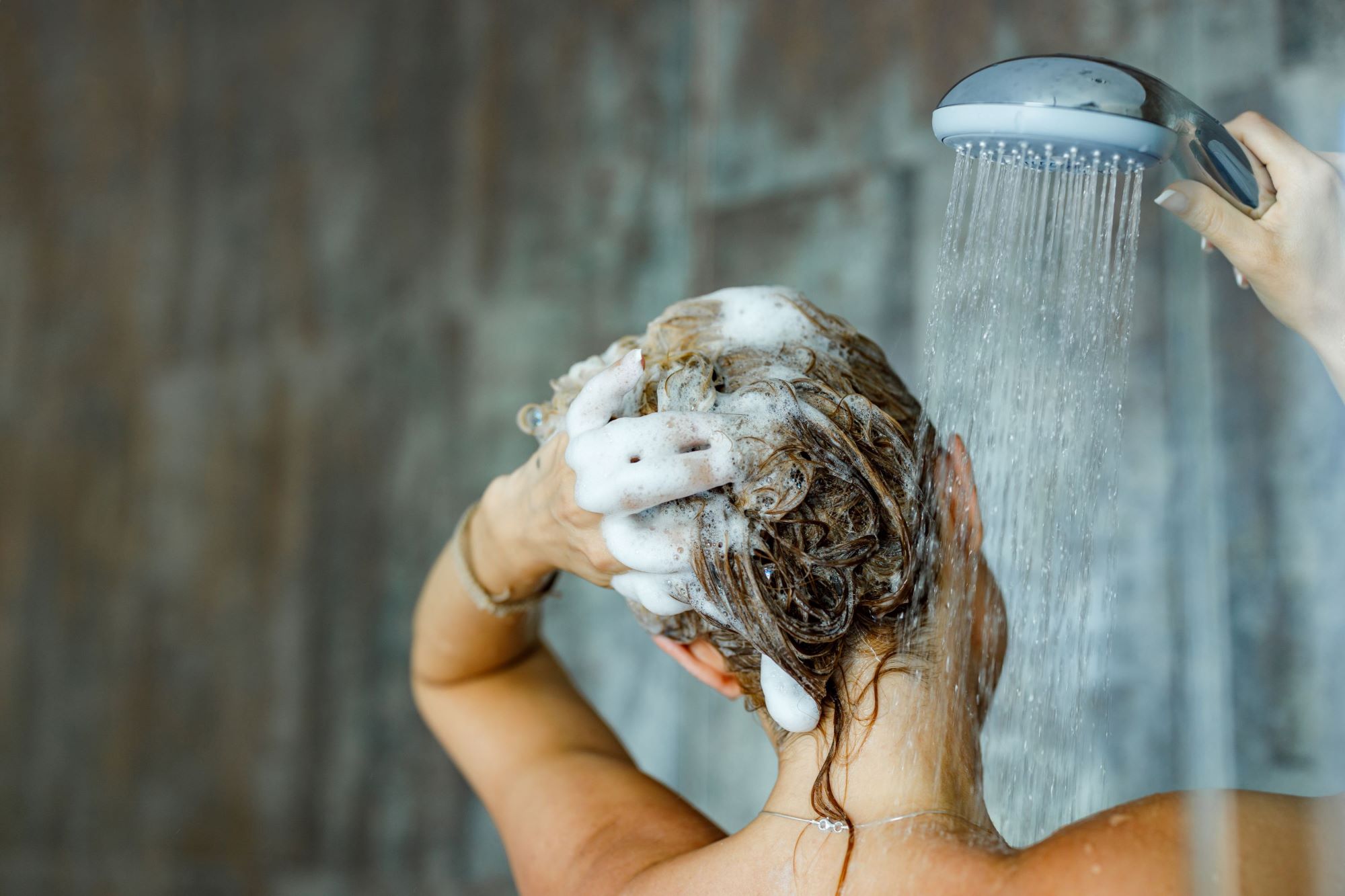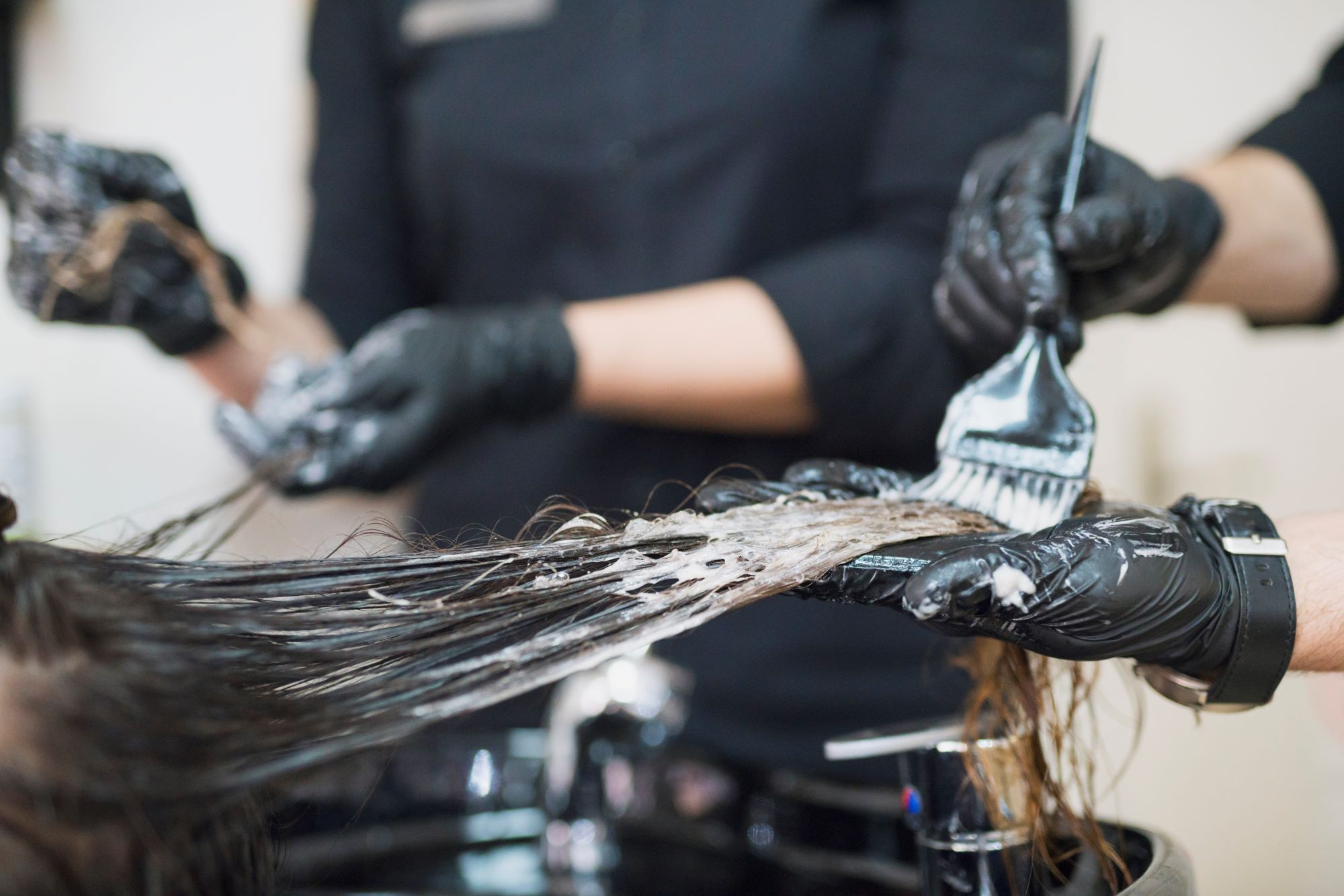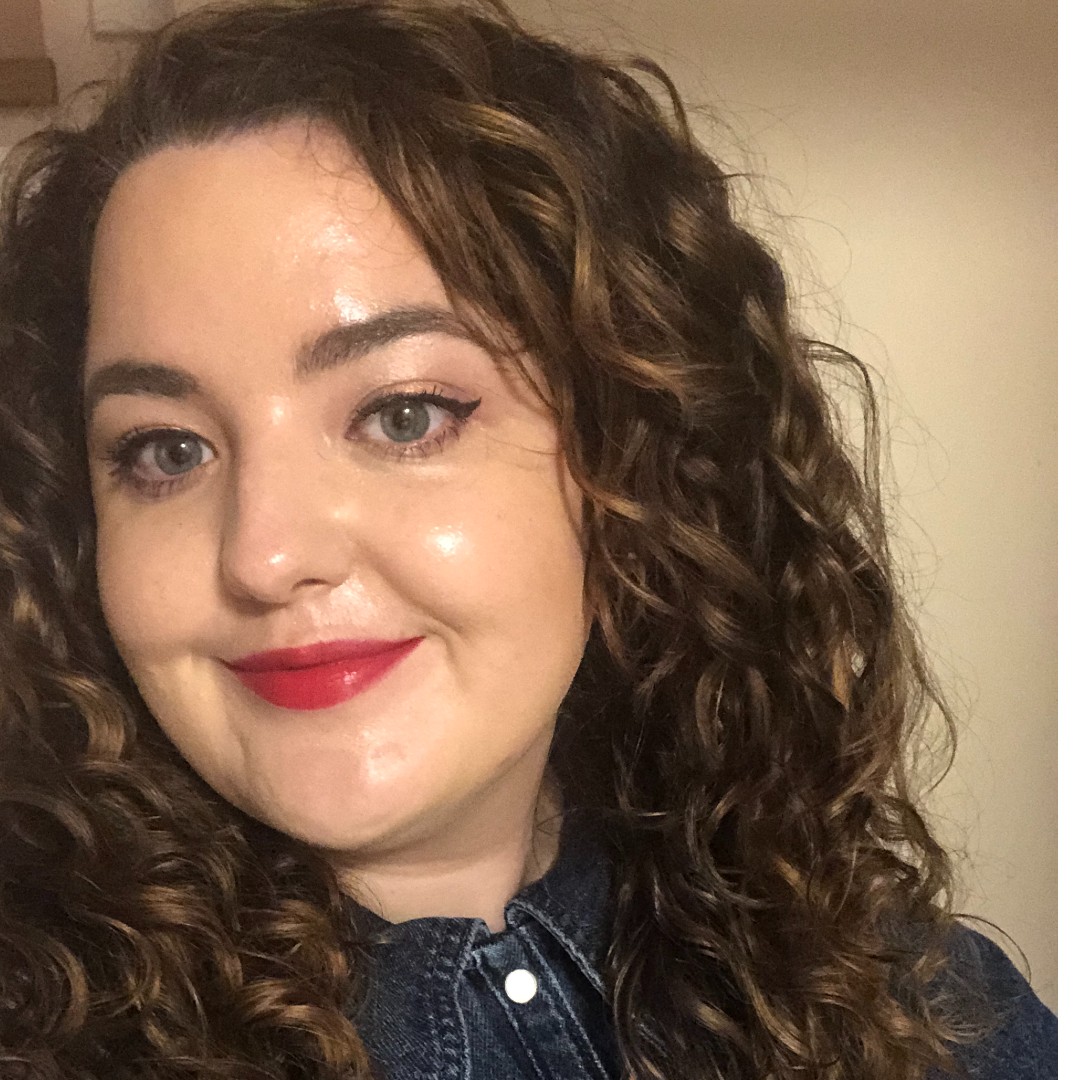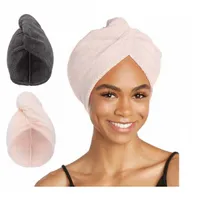How to get rid of frizzy hair: 15 tips from haircare experts


Learn how to get rid of frizzy hair and get glossy locks with these tried-and-tested tips.
Unruly, frazzled locks? You’re not alone. So many people suffer from this common mane mishap and alarmingly it's something more of us will have to contend with in years to come too - as frizzy hair develops as you age. Thankfully much like there's hacks to help detangle curly hair, there's handy tips and tricks you can try to help fight the frizz. But before switching up your haircare regime, it's good to understand why the frizz happens in the first place.
Dr Sharon Wong, consultant Dermatologist and hair and scalp specialist at The TrichoDerm has all the answers: "Frizzy hair is due to the absorption of water molecules from the environment and air," she tells us. "Hair is a porous structure. The amount of water absorbed from the environment is determined by how dry the hair fibre is. The drier the hair, the more water it can absorb, and the frizzier it gets.”
Trichologist Annabelle Kingsley agrees, and tells us why hair has a habit of becoming frizzy in humid weather: "Interestingly, atmospheric temperature doesn’t have much of an effect on frizz. However, it can make you sweat – and as sweat has a high water content. A rise in temperature can inadvertently result in frizzy hair."
Whilst humidity and elements in the air are out of our control, anti-frizz products plus steps taken in the shower and whilst drying can be easily tried to fend off the frizz. With this in mind, we've asked these top haircare experts how you can get rid of frizzy hair from the comfort of your own home.
How to get rid of frizzy hair
1. Pick a moisturising shampoo
Swapping your shampoo is one of the easiest ways to change your locks and get rid of frizzy hair. You don’t have to faff around with any extra steps, and they’re usually quite cost-effective too. It’s always worth investing in the right buy for your hair type. Frizzy hair should use a moisturising shampoo, to nourish every strand. This will help smooth out frizz, as dryness is one of the biggest reasons why hair is frizzy.
Camille Friend, celebrity hairstylist and HASK Brand Ambassador explains why the right shampoo will make all the difference:
"Frizz in the hair happens when the hair is dry and lacks moisture balance," she tells us. "You start building the moisture in the hair with your shampoo and conditioner. So pick one that’s designed to really inject moisture and instantly hydrate your hair."

"Swapping to a nourishing shampoo will ensure that hair gets the right treatment from the very first step. It will encourage the fibres to absorb the conditioner and stylers more effectively."
2. Try a blow dry
Of course waves, coils and curls are beautiful. But, if your hair’s wavy or curly, it’s likely that it looks less sleek or tamed. Renowned celebrity hairdresser Michael Van Clarke explains why: "The hair may or may not be healthy from root to tip, but the curl or wave makes the strands behave wayward and multidirectional. Think cotton wool as opposed to cotton thread. Same material – but in thread, the fibres all lay in line and in the wool it’s spaghetti mayhem. This will create a frizzy effect with hair."
The solution is to get the hair laying in line by blow drying it straight to make it sleek. Using a round bristle brush will get hair much smoother. When you’re using any heat on your hair, be sure to apply heat protection before using any heat, to prevent it from damaging your hair. Heat-damaged hair will be drier, which will make it frizzier - making it an endless cycle.
3. Consider changing your haircut
The best haircut for frizzy hair will vary depending on your hair type, Michael explains:
"A poor haircut will make hair look frizzier. If the ends aren't cleanly cut and balanced, the layers won't fold into each other. This will leave jagged ends sticking out irregularly and giving a dry frizzy look. Anything that depletes the hair shaft will age it quicker, meaning hair will naturally become drier and frizzier looking."
Speak to your hairdresser about which cuts will give you a sleeker, smooth finish:
- The best haircut for curly hair usually incorporates long layers. Not a blunt cut that weigh down and flatten the curls. Curly hair is usually best cut dry - so the stylist can really see what the curl pattern looks like and how it’ll sit.
- For straight hair, a blunter cut will help it look sleek - feathery cuts tend to sit less smoothly.
- Short hair often looks healthier, as the dead ends have been trimmed off.
In addition to the frizz, be sure to chose a haircut that suits your face shape. And why not consider one of these anti-ageing hair cuts to open up your face.
4. Chose a microfibre hair towel
While we’re talking about fabrics, it’s worth considering the towels you use too. From experience, we can tell you that microfibre towels are better for frizzy hair. Once we made the swap, the difference to our hair was noticeable after just a few uses. They’re really worth the investment.
Haistylist Camille recommends using a microfibre towel to dry your hair, as it’ll soak up more water, quicker. The other reason why microfibre towels are good for frizzy hair is because the fibres in your normal bath towels are large and stiff. And this can disrupt the cuticles of your hair. It’s extra important to consider this as hair is most fragile when it’s wet, so you have to be extra careful when it’s in this state. Soft, microfibre towels are best because it’ll dry hair quickly, while also stopping frizz from forming.
A favourite on the QVC channel, Turbie Twist is just as top-rated online, boasting a 4.7 star rating on Amazon. Oen reviewer says: "I think they make my hair slightly less frizzy if I time it right. I can't leave my hair in it too long but have to leave it in long enough for it to at least start to dry." Grab two for under £30.
5. Protect frizzy hair against humidity
We’ve all been on a hot holiday and seen our hair explode like Monica from Friends. But have you ever wondered why does humid weather make hair frizzy? Humidity means there’s extra moisture in the air, which can cause the fibres in your hair to swell. That explains why hair is frizzier in the summer or why we can't get rid of frizzy hair on holiday in a hot country.
Properly moisturised hair is less likely to absorb the moisture from the air. Be sure to keep extra emollients handy, packing nourishing oils and creams in your luggage. Apply them to damp hair before styling, to help them sink in and get to work. A mini bottle of hair oil will come in handy in your handbag too, for touching up ends when you’re out and about. Using a sealing, humidity-prevention cream will also help - creating a barrier and preventing the moisture particles from entering the hair fibres.
6. Tame with a serum
Adding an extra product to your haircare routine can make a huge difference to the gloss of your locks. It doesn’t have to be a long, arduous process. Find hardworking, effective treatments that does all the hard work for you. A serum will sink in deeply and help keep the hair cuticles flat and sealed, preventing frizz. The best serum for frizzy hair is dependent on your hair type, but John Frieda Frizz Ease Original Serum has shown to be globally loved and respected.
There’s a reason this is a bestseller all around - it just works, and i think the price is even better. My mum and I both have really curly hair, and I remember growing up she always had a bottle of this in her bag. The difference is always instant, taming frizz and sealing split ends in seconds. Work through damp hair before styling.
You only need one pump of this wonder product, that's available at Boots for under a tenner. The serum is made with a highly concentrating Smoothing Complex plus Ginseng Extract that both smells great and works to smoothe, protect and get rid of frizzy hair. A must-buy for medium to thick locks.
7. Stop bed head
We spend about a third of our lives in bed. So it makes a lot of sense to think about the way your hair’s being affected while we’re snoozing. Moving around while you sleep can cause friction on your head and lead to tangled locks, which makes it look really frizzy the next day.
Hairstylist Camille has a top tip: "Sleep with hair braided or twisted into a bun or top knot to maintain style and moisture." This will protect your ‘do, and also add extra shape to straight hairstyles.
For curls, sleep with your hair in a high top knot, as close to your forehead as possible - also known as a ‘pineapple’. This will stop the curl pattern being compromised, and will also boost volume at the root. For an extra gentle touch, use a sink or satin scrunchie, to ensure an extra smooth finish. Which brings us to our next tip…
8. Sleep on silk
The other way to protect your hair while you get your deep sleep is swapping your bedding - it can be a real game changer. And Camille has spelt this out: "Sleeping on a silk pillowcase will help stop hair getting frizzy."
The silky smooth fabric has a number of hair benefits - it won’t disrupt the fibres of your hair and will help boost shine. Plus it'll stop bed head and prevent breakage and split ends. There's further good news for your skin too, as silk is hypoallergenic and helps smooth and stop wrinkles getting deeper. It will also stop your night oils and creams from being absorbed into the fabric, making them more effective too.
If you can't afford the real deal then consider satin pillowcases instead. They will have a similar effect and will work just as well if you’re on a budget.

How to prevent frizzy hair
9. Hydrate, hydrate, hydrate
There's a saying that dermatologist and hair guru Dr Sharon Wong swears by: The drier the hair, the frizzier it will get. So make sure to keep your locks nourished with moisturising shampoos, conditioners and treatments. Taking extra time to hydrate your hair will leave it looking healthier, softer and shinier, as well as boosting moisture and preventing frizz from forming. Glossy hair makes you look younger too and that's a bonus we all want.
This is something Annabelle Kingsley agrees with - a resident Trichologist (scalp disease expert) at Philip Kingsley:
"Dry hair is more prone to breaking, and broken hair tends to look frizzy and frazzled. Hydrate your hair with a weekly pre-shampoo conditioning treatment, such as Philip Kingsley iconic Elasticizer to help prevent breakage." We love this product - and it’s a key buy in our best products for frizzy hair. It helps hair become more 'elastic' and stretchy, stopping it snapping and getting damaged.
Suitable for all hair types. Treat your locks to lashings of this super-conditioning treatment once a week. It's paraben free, contains UV for added heat and sun protection and promises to inject bounce and shine.
10. Protect your scalp
Scalp talk isn’t very sexy admittedly, but it’s a key factor in keeping your hair happy. Think about it - the hair on your scalp is an extension from the skin on your face. So how hair comes through will really affect how healthy it is.
"The most effective way to combat weather-associated frizz is to remain in a cool environment. But this isn't very practical" Annabelle admits. "The next best thing is to apply products to your scalp throughout the day that soak up excess moisture. Lightweight dry shampoos with scalp benefits are best for this as they also soothe the scalp and boost body."
When washing your hair, give your scalp a little massage to make sure that you’re really getting to the skin underneath the hair. This will help prevent product buildup, and also prevent a dry flaky scalp, which can lead to dandruff. If your scalp isn’t healthy, invest in the best scalp scrub and scalp massagers, to get it back on track.
11. Try to use less heat to get rid of frizzy hair
Yes we've said that the right blow dry will really help cheat sleek hair - and we stand by this. But ideally you should be limiting the use of any heat styling. Hot temperatures applied to fragile wet hair can really blitz your hair cuticles, leaving it looking frizzy and unkempt in the long run. The same applies to high-tech straighteners and curling tongs - they work to create beautiful hairstyles, but overuse will seriously fry your hair.
If you can’t break up with your blow dryer, try limiting the use to once a week, and lower the temperatures. You shouldn’t be using the highest, hottest settings. And always finish off with a cool blast when you’re blow drying.
When you do use heat styling for special occasions, use dry shampoo over the next few days to keep the style going for as long as possible. And of course - protect hair before styling with a generous spritzing of heat protection.
12. Give bleach a break
Ever wonder why brunettes tend to have glossier locks? Blonde hair is less shiny and so the colour can look flatter and less multidimensional. Blonde hair can also look frizzier, as the process of bleaching your hair is so drying and can really harm your hair’s health. "Hair with damaged cuticles from heat and chemical treatments are more at risk of frizz," confirms Dr Sharon Wong.
Bleaching hair at home can be more harsh than getting it coloured in the salon. The professionals are used to blending in conditioning treatments with the harmful bleach, and often they’re better at spotting the first signs of damage.
If you’re a die-hard non-natural blonde, consider opting for a more low-maintenance colour treatment like balayage. It needs less root upkeep, meaning you won’t be hitting the bleach as often. This will prevent extra damage - and save you money, too. Balayage is also a great way of blending and preventing natural grey hair too. Speak to your stylist about the best styles to suit you.

13. Use deep treatments weekly
Even if you’re using the best shampoo for frizzy hair and using plenty of conditioner and oils, applying an intensive mask treatment regularly will help boost moisture. In the same way that a luxurious face mask will overhaul your skin problems, the best hair mask for frizzy hair will help overhaul it and get it back to its glossy self.
Pampering your hair is the best way to keep it healthy, glossy and shiny. Plus it’ll give your some much-needed 'me time' too. Once a week, apply an intensive mask root-to-tip. Let it sit for at least 20 minutes before washing it out.
For a more intensive treatment, apply before bed and sleep with it wrapped in a towel, washing it out in the morning. The difference from the first time will be instantly noticeable. And if you make it a habit your hair will just keep getting better and better.
14. Check the ingredients
Just like in skincare, the ingredients in your products really matter. You wouldn’t overload your complexion with heavy, harsh ingredients - so why should your hair be different? Products that contain alcohol can really dry out your strands, leaving it looking thirsty and frazzled, especially with continued use. So be more conscious in your selection to help get rid of frizzy hair.
Dr Sharon Wong agrees: "Using products that are not necessarily suited to your hair type can result in very obvious changes to the condition of the hair. For example people with thin and limp hair, using products which contain silicones will weigh the hair down. This will worsen its appearance.
"Curly hair types or those with naturally dry hair using styling products which are alcohol based will only add to the dryness and exacerbate frizzing," she adds. "It's worth spending the time to really understand your hair type and being careful with product choices."

15. Protect from the environment
The environment can have as much of an effect on your hair as it can on your skin. Think about it - pollution, rain and sweat can really impact how your hair looks and feels after a day out and about.
Michael warns: "Anything that depletes the hair shaft will age it quicker meaning hair will naturally become drier and frizzier looking. Aim to minimise the damage by using better techniques to style and colour your hair. When you’re on holiday, stay protected in the sun and sea and regularly feed back into the hair with a pre-wash treatment."
Pollution, UV rays, salt water and chlorine are some of the worst offenders when it comes to frazzled, damaged locks. Shield your hair with some protecting haircare - you wouldn’t go out in the sun without applying plenty of SPF, so why should your hair be different? Make hair protection a part of your SPF routine. The best heat protection is the one that won’t feel like a chore to use - so find the right one for you and your routine to help get rid of frizzy hair.
Why does hair get frizzier with age?
Hair has a habit of getting frizzier as we age due to body changes says Dr Sharon Wong. As we know with our skin, factors like hormones and the aging process can contribute to changes and this applies to our 'do too.
"The early menopause and menopause phase of a woman’s life is a time of immense change to the body," she tells us. "For many women the shift in hormone status is accompanied by systemic changes – hair and skin included.
"Hair changes are incredibly common during this period of time and the changes can be rapid and dramatic. Many women are at a loss as to what to use and how often to wash their hair. Things that they used for decades prior are no longer adequately addressing their altered needs."
If you find yourself in this quandry it's always good to book a consultation with your hairdresser. They'll be able to detect what your hair needs and how to get rid of frizzy hair if it's become a new problem.
Looking for more expert recommendations? Check out these 14 long-lasting perfumes and the best Black Friday perfume deals available this year.
Video of the Week:
Parenting advice, hot topics, best buys and family finance tips delivered straight to your inbox.

Rhiannon Derbyshire is the Senior Beauty Editor for Goodto, Woman & Home and other publications. She’s specialised in writing about beauty, fashion, interiors and health - though beauty remains her favourite topic. She lives in south London, and can often be found pootling around the commons while listening to a podcast.


